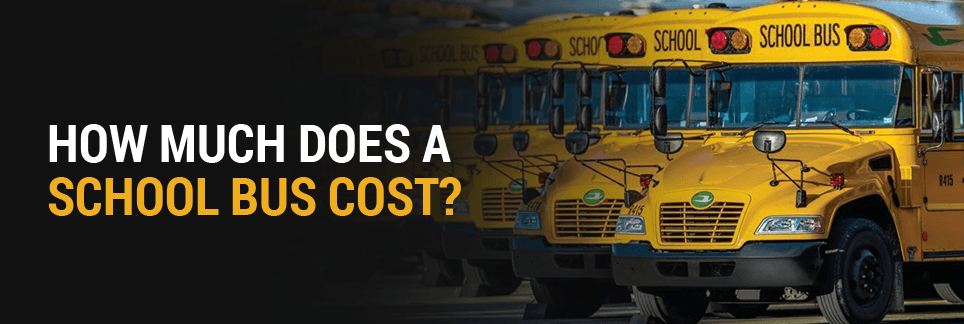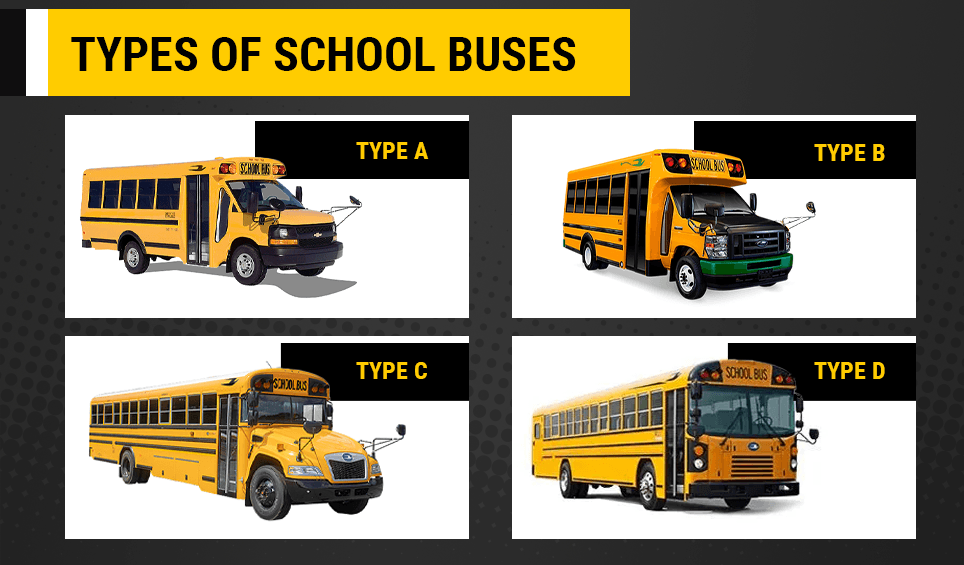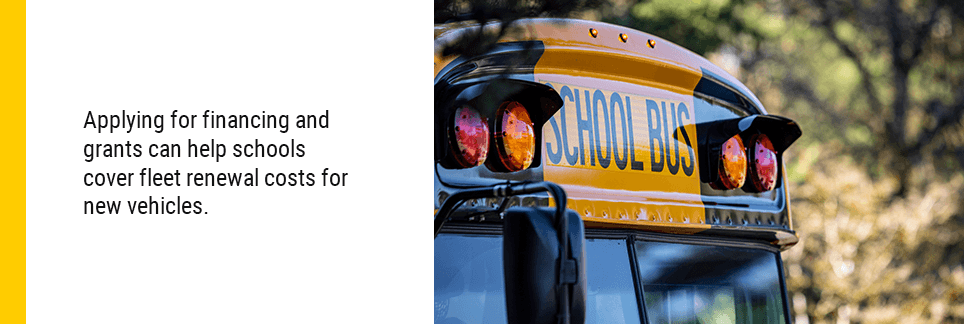
School buses are in high demand because they are a vital choice for student transportation. In fact, manufacturers are seeing a 4.4% increase in bus production compared to 2022. However, it’s crucial to know that buying a school bus involves more than just dollars and cents — it’s about understanding the factors that make up the cost. Whether you’re considering a new ride for your institution or exploring the world of used buses, understanding the factors behind the price is key.
This blog breaks down the essentials so you can make an informed decision that fits your budget and needs. If your district is in the market for new school buses, talk to the experts at Gregory Poole Bus Sales. As a premier Blue Bird dealer, we’re the best place to buy a school bus in North Carolina. We can offer you free quotes on the exact models you’re interested in, with the most accurate pricing for our local market.
Not all school buses are created equal. There are four main school bus types, each with its own charm and purpose.

First up, we have Type A buses. These are like the compact cars of the school bus world. They’re built on a van chassis, making them maneuverable and great for navigating tight streets and busy areas. Their flat or curved nose makes them easy to spot. They’re ideal for smaller groups or routes with limited space.
Moving on to Type B buses. These beauties have a similar front end to a Type A but with a larger body. They often look like a streamlined version of the traditional school bus. Type B buses are often used for special-needs transportation. With their increased capacity, they strike a balance between size and functionality.
Type C buses are the ones you might picture when you think of a school bus. These are the classic yellow buses with a distinct hood in the front. Their size and power make them great for longer routes with varied terrains. Type C buses are versatile and can accommodate various seating configurations.
Lastly, we have Type D buses, also known as rear-engine buses. Their engine is in the back, which means a quieter ride for you and better visibility for the driver. They often come with a flat front, which is why they’re sometimes called “transit-style” buses. These big guys are perfect for heavy-duty routes and larger student groups.
As with all equipment purchases, new will always cost more than used. Many factors affect the prices for both new and used buses. How much does an old, used school bus cost? The pricing depends on its condition and mileage. A rusty bus in poor condition will likely require a heavy investment in repairs and will therefore have a lower upfront cost.
With the new green movement and the Environmental Protection Agency’s (EPA) Clean School Bus Program, let’s compare the costs of new electric school buses with their counterparts. CNBC reports that battery-electric Type A school buses can cost around $250,000, compared to $90,000 to $95,000 for gasoline versions. For larger Type C or Type D buses, electric options range from $320,000 to $440,000, while diesel versions cost about $140,000 – $160,000
Applying for financing and grants can help schools cover fleet renewal costs for new vehicles. While the initial investment may seem overwhelming, it can prove worth the price when you have fewer maintenance costs and equipment with a longer service life.

A refurbished bus that’s not too old and doesn’t have many miles will be a much safer investment if buying used. Some estimates say that a used school bus with between 80,000 and 180,000 miles may cost between $3,000 and $10,000, and prices may be a little higher than that if it’s in great condition. Typically, schools purchase new buses, though it’s possible to find used buses in excellent condition.
As we’ve learned, school buses are classified into four size categories. Now, why does knowing this matter? Well, imagine trying to fit a square peg into a round hole. Picking the right bus type ensures that you’re getting the best fit for your needs.
So, in the world of school buses — and their costs — size really does matter. Here are a few considerations for choosing the size of your school bus and the associated costs:
While larger buses usually cost more, they’re typically the preferred option. Since they can seat more students, they save districts in bussing costs per student. In 2023, about 25% of survey respondents — including school officials, transportation staff and company representatives — were more interested in Type C or D buses.
In 2023, fuel was one of the top three expenses that required additional budgeted funds. So it’s safe to say that fuel source affects everything from the complexity of the bus manufacturing to the ongoing maintenance and fueling costs. In general, higher initial investments can result in cost savings over time in lower maintenance costs and vice versa:
Diesel is the most popular fuel source for school buses, with school transportation buyers preferring clean diesel buses, according to a survey by School Transportation News. As stated earlier, diesel-fueled school buses can range anywhere from $140,000 to $160,000 depending on the type.
Electric school buses (ESB) typically cost more than diesel buses. Again, an ESB can range anywhere between $250,000 and $440,000, depending on the type of bus. Electric school buses are quieter, cleaner and have fewer moving parts. While the upfront investment is higher, lower operating costs and environmental benefits are worth considering.
The exact prices can vary by your school’s needs, the manufacturer and location. It’s crucial to weigh the cost of an electric vehicle by the total cost of ownership when deciding whether it’s a good choice over diesel.
Propane costs less than gasoline or diesel and burns cleaner, reducing emissions. It’s a sweet spot for those who want eco-friendliness without breaking the bank. Propane vehicles cost a bit more upfront, but the lower fuel expenses balance it out. Compared to diesel buses, initial costs can be similar due to diesel’s extra expenses.
They also offer a better lifetime cost when considering vehicle life span and infrastructure like propane tanks. Propane buses are easier to maintain than diesel, which reduces some of the ongoing expenses. Propane fuel pricing is also lower and more stable than diesel prices.
Another eco-friendly contender! CNG buses also cost more than diesel buses, with the cost savings coming from reduced maintenance costs and lower fuel costs. Like propane, CNG has more predictable costs than diesel fuel. In colder weather, these buses kick off without a hitch and don’t require overnight parking in heated facilities. While the lifetime costs are lower, the initial cost is higher, ranging from $25,000 to $30,000 on average.
When considering how much a school bus is worth, it’s essential to consider its lifetime cost beyond the initial purchase price. In fact, of the top three school bus expenses, maintenance costs came in third place.
Upkeep costs include fuel costs as well as maintenance requirements, which can vary by bus type. Propane and electric buses are both more affordable to maintain than typical diesel buses.
School districts with concerns about their high fleet maintenance costs can reduce their expenses with strategies such as:
If you’re still asking, “How much does a Blue Bird school bus cost?” you’ve come to the right place. Gregory Poole Bus Sales is North Carolina’s premier Blue Bird dealer, and we have ample experience helping you find new and used school buses for your district.
Browse our selection of new Blue Bird and Micro Bird buses, and contact us for a free quote on any of our school buses.